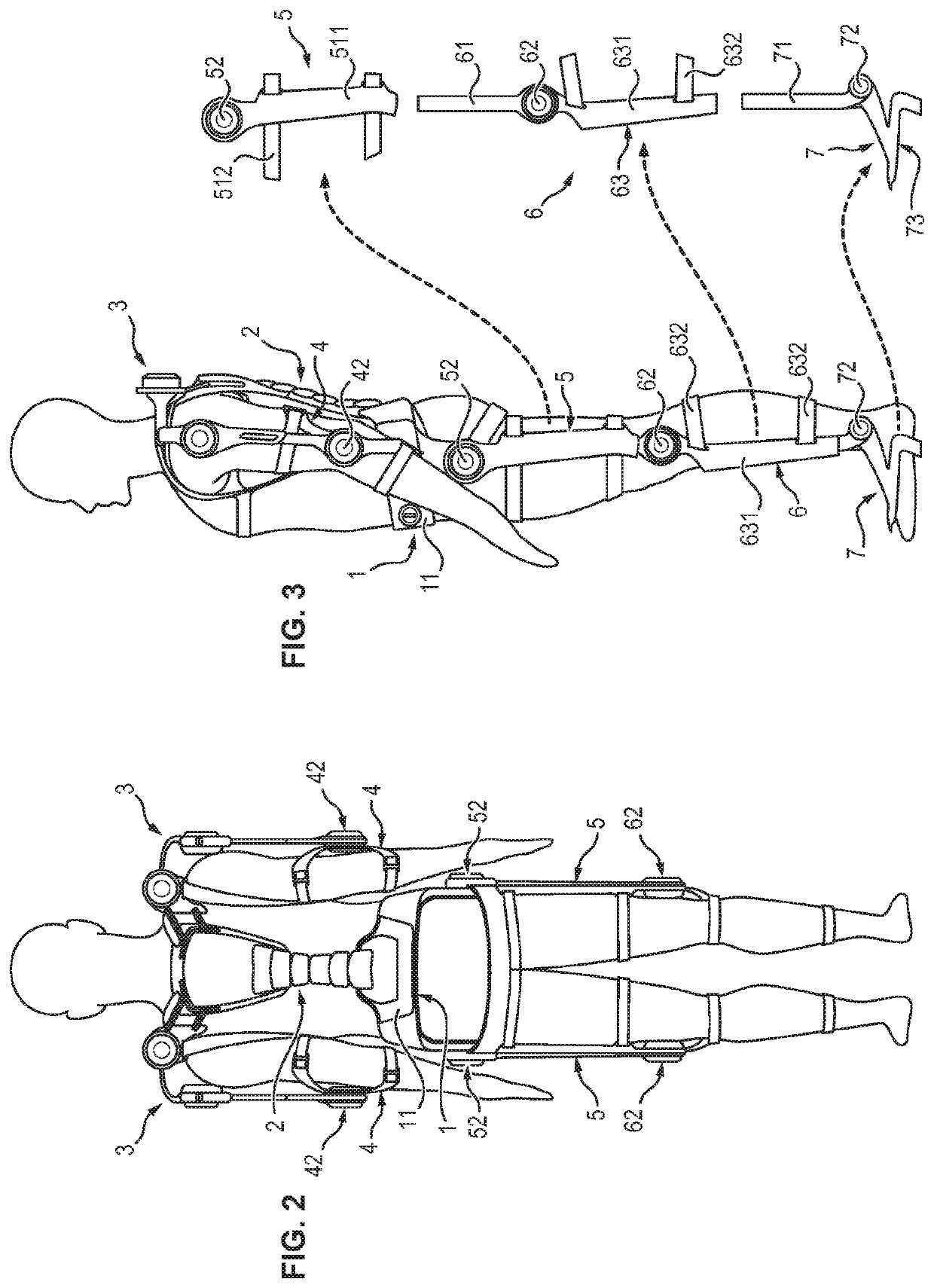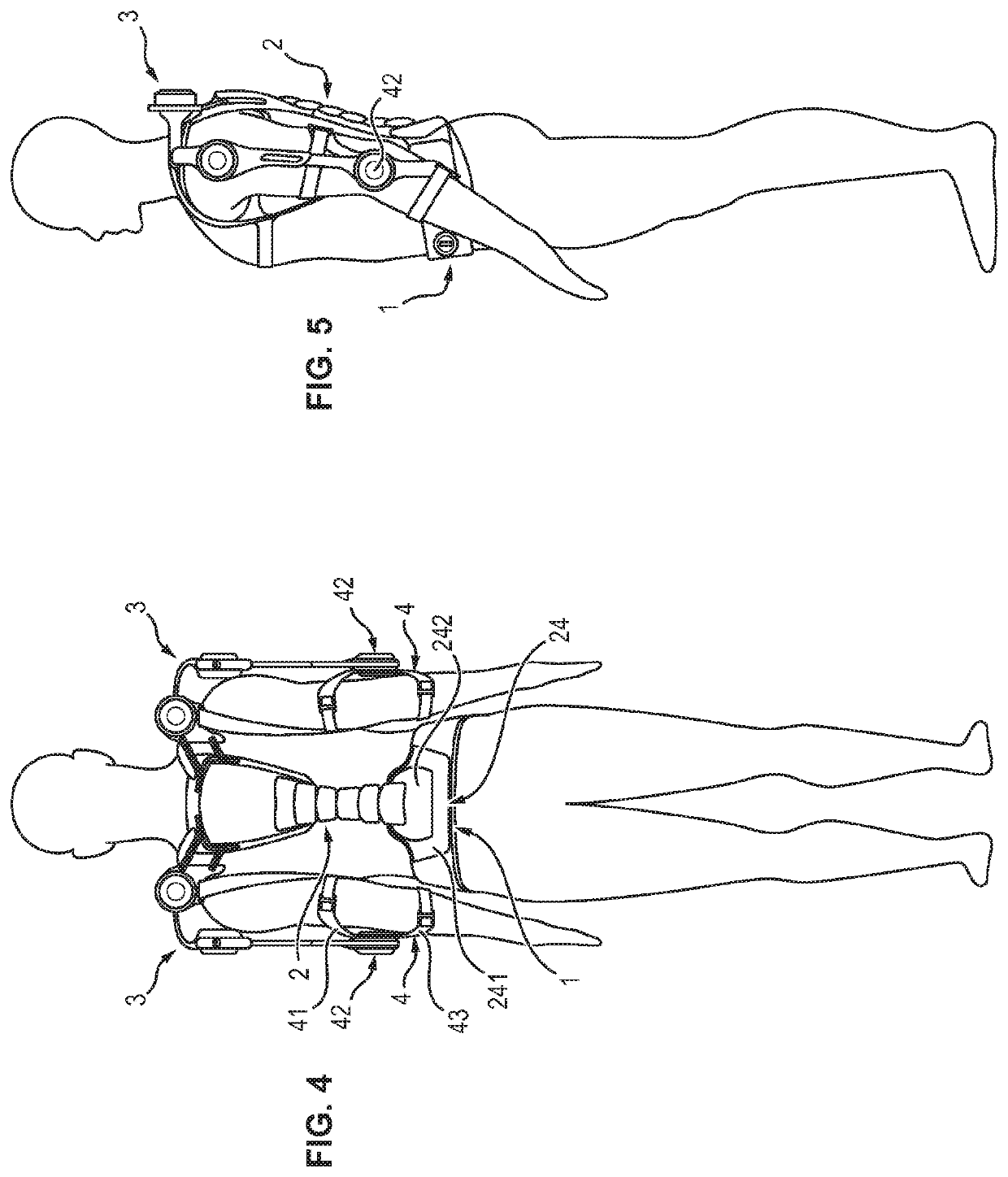Back module for an exoskeleton structure
a back module and exoskeleton technology, applied in the field of back modules for exoskeleton structures, can solve the problems of reducing the mobility of users, exoskeletons that do not allow the back of users to bend, and exoskeletons that do not allow users to move easily in space, so as to reduce the mobility of users
- Summary
- Abstract
- Description
- Claims
- Application Information
AI Technical Summary
Benefits of technology
Problems solved by technology
Method used
Image
Examples
Embodiment Construction
[0042]In FIGS. 1 to 7, the exoskeleton structure shown comprises a base module 1, a back module 2, two shoulder modules 3, two elbow modules 4, two hip modules 5, two knee modules 6, two foot modules 7 and a backpack support module 14.
[0043]The exoskeleton structure illustrated in these figures can be used in different configurations, so as to obtain different exoskeletons adapted to different uses.
[0044]In a first configuration illustrated in FIGS. 1 to 3, the exoskeleton is formed by assembling the base module 1, the back module 2, the two shoulder modules 3, the two elbow modules 4, the two hip modules 5, the two knee modules 6 and the two foot modules 7.
[0045]In a second configuration illustrated in FIGS. 4 and 5, the exoskeleton is formed by assembling only the base module 1, the back module 2, the two shoulder modules 3 and the two elbow modules 4.
[0046]In a third configuration illustrated in FIGS. 6 and 7, the exoskeleton is formed by assembling only the base...
PUM
 Login to View More
Login to View More Abstract
Description
Claims
Application Information
 Login to View More
Login to View More - R&D
- Intellectual Property
- Life Sciences
- Materials
- Tech Scout
- Unparalleled Data Quality
- Higher Quality Content
- 60% Fewer Hallucinations
Browse by: Latest US Patents, China's latest patents, Technical Efficacy Thesaurus, Application Domain, Technology Topic, Popular Technical Reports.
© 2025 PatSnap. All rights reserved.Legal|Privacy policy|Modern Slavery Act Transparency Statement|Sitemap|About US| Contact US: help@patsnap.com



